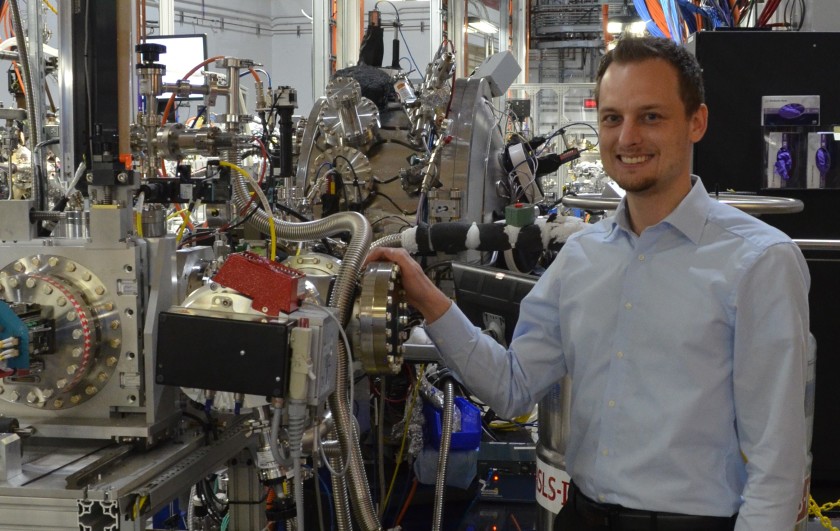New Helmholtz Young Investigator Group at HZB

Felix Büttner has set up a holography chamber at Brookhaven National Laboratory. © privat
Dr. Felix Büttner will establish a Helmholtz Young Investigator Group (YIG) on topological solitons at the HZB beginning in March 2020. Topological solitons occur in magnetic quantum materials and can contribute to extremely energy-efficient switching processes. Büttner wants to develop a new imaging technique at BESSY II to study these quasi-particles.
Dr. Felix Büttner has received funding from the Helmholtz Association following a tough selection process. He will now build up his own research group, a Helmholtz Young Investigator Group (YIG).
Until now, he was doing research as a postdoc at the Massachusetts Institute of Technology in Cambridge, MA, USA. Büttner has already distinguished himself with numerous publications in the field of magnetic quantum materials.
At the HZB, he wants to develop a new high-resolution technique at the BESSY II synchrotron source that will enable the imaging of complex magnetic structures under realistic conditions at room temperature.
He will focus on antiferromagnetic topological solitons that occur in certain materials and are considered important candidates for extremely energy-efficient data storage. “There has been little progress in antiferromagnetic soliton research so far due to a lack of high-resolution imaging techniques that can detect antiferromagnetic topological solitons in actual devices”, Büttner explains and adds: “The HZB offers high-tech facilities and expertise in all these areas, making it the perfect place for this ambitious project.”
arö
https://www.helmholtz-berlin.de/pubbin/news_seite?nid=21125;sprache=en
- Copy link
-
Catalysis research with the X-ray microscope at BESSY II
Contrary to what we learned at school, some catalysts do change during the reaction: for example, certain electrocatalysts can change their structure and composition during the reaction when an electric field is applied. The X-ray microscope TXM at BESSY II in Berlin is a unique tool for studying such changes in detail. The results help to develop innovative catalysts for a wide range of applications. One example was recently published in Nature Materials. It involved the synthesis of ammonia from waste nitrates.
-
BESSY II: Magnetic ‘microflowers’ enhance magnetic fields locally
A flower-shaped structure only a few micrometres in size made of a nickel-iron alloy can concentrate and locally enhance magnetic fields. The size of the effect can be controlled by varying the geometry and number of 'petals'. This magnetic metamaterial developed by Dr Anna Palau's group at the Institut de Ciencia de Materials de Barcelona (ICMAB) in collaboration with her partners of the CHIST-ERA MetaMagIC project, has now been studied at BESSY II in collaboration with Dr Sergio Valencia. Such a device can be used to increase the sensitivity of magnetic sensors, to reduce the energy required for creating local magnetic fields, but also, at the PEEM experimental station, to study samples under much higher magnetic fields than currently possible.
-
Georg Forster Research Fellow explores photocatalysts
Dr. Moses Alfred Oladele is working on photocatalysis for CO2 conversion in a joint project with the group of Dr. Matt Mayer, HZB, and Prof. Andreas Taubert at the University of Potsdam. The chemist from Redeemer's University in Ede, Nigeria, came to Berlin in the summer of 2024 with a Georg Forster Research Fellowship from the Alexander von Humboldt Foundation and will work at HZB for two years.
